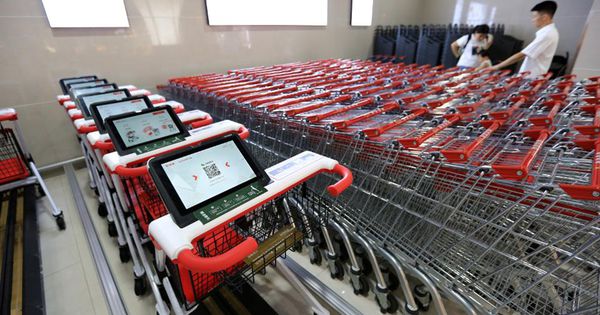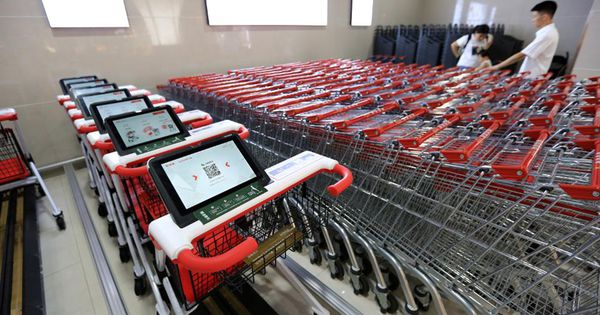
We walked into the retail year with our eyes fixed on the latest shopping app craze and our hearts set on exotic concepts. We walk away with thousands of shuttered stores behind us and an unsated quest for wellness, youth and fun.
Retail in 2018 was in many ways like fashion — a parade of frivolity that’s temporarily exciting, relieved occasionally (thankfully!) by a few practically patterned concepts. Several floundered (meal kits are still looking for a home, virtual reality makes people nauseous), but a few ideas did gain footing, and they will guide what shoppers can expect in 2019. Here are eight trend takeaways from 2018.
1. The youth will always rise – but we shouldn’t ignore their parents.
The oldest members of Generation Z, the first digital natives, are now college grads. That means they are already becoming highly influential consumers. Among their traits, they are bargain hunters, favoring thrift shops and dollar stores to malls. Not surprisingly, then, they are savers. Retailers that offer reward programs should appeal to this generation with practical membership perks, such as direct discounts or savings and free shipping.At the same time, retailers shouldn’t overlook this young generation’s parents, and the parents before them. Baby Boomers and Generation X shoppers are experienced consumers who are willing to try new brands and often have more money for discretionary items.
2. In a lot of retail areas, we still follow the globe — and that’s OK.
From eye-tracking product ordering to remote-controlled vending machines, retailers in much of the world are ahead of U.S. merchants in areas such as artificial technology, self-checkout and biometrics. However, it’s not so much because their technology is advanced as it is because their consumers are more open to trying these emerging features. Consider that the world’s first virtual store, in which 3-D avatars were created from scans of shoppers’ bodies, opened in South Korea in 2007.
These efforts get a lot of buzz, but buzz doesn’t pay the bills and some of these expensive technologies could lose their appeal before they pay for themselves. In Asia, where populations are so dense one store can serve as a test market, such trials may make financial sense. In the U.S., merchants might benefit from partnering with these foreign merchants first.
3. Yet U.S. shoppers have much to teach foreign merchants — just ask Lidl.
In June 2017, the German discount giant Lidl entered the United States with expansion plans that threatened its German rival Aldi (already in the U.S.) and most other retailers that trafficked in value pricing. But by January 2018, Lidl said it would curb its planned expansion sharply and acknowledged mistakes in its aggressive expansion plan.Among the missteps: It failed to recognize American preferences for items such as prepared foods, and its stores were bigger, more complex and more high-end than shoppers apparently wanted, possibly because it aimed to be the opposite of Aldi.U.S. merchants, including those that have tried to expand into foreign markets themselves (such as Walmart), could learn from the causes of Lidl’s retreat. With more non-food merchants such as fuel stations and dollar stores entering the grocery category, both in-store and online, grocery retailers need to better understand their customers and address those needs not filled by other players.
4. Walmart is still — and will continue to be — full of surprises.
In 2018, Walmart made a bet it could win both fashion-forward consumers and its price-conscious core. It did so with aspirational new private-label brands, a sleeker website and a partnership with Lord & Taylor (following its 2017 purchases of catchy names including Bonobos and ModCloth). It wasn’t Walmart’s first run at winning the higher-end shopper, but this time it succeeded. Walmart’s third-quarter profits and revenue exceeded expectations, and it raised its financial performance outlook for the year.Walmart knew from experience that even with its size, it had to build slowly to change. It carefully accumulated other brands such as Bonobos to gauge shopper reaction. When it redesigned its website experience, it started with home furnishings — a category that encourages creativity, planning and dreaming. As Lidl learned, it pays to put the shopper ahead of product, service and even revenue.
5. Technology is not fun enough, and shoppers just want to have fun.
In their earnestness to wow customers with interactive apps and in-store ordering kiosks, many retailers overlooked that shoppers weren’t having fun. In fact, research revealed people were 1.4 times more likely to have fun at work than shopping.Turns out that the tools that enable more convenient shopping trips, even bigger baskets, do not always encourage longer stays that promote relaxation, inspiration and entertainment. Shoppers want to feel good about themselves; to discover treasures and see beauty. These are elements of fun.Merchants including Kroger are striking a balance: Its order-and-pick-up services are complemented by exclusive, in-house restaurants and unexpected merchandise, like apparel, so shoppers can experience more of life’s surprises.
6. Analytics is still a baby. Nurture it.
Retail is among the oldest industries, but when it comes to technology, it can learn a lot from “toddler” businesses. EBay proved so much when it adopted an analytics model similar to that of Spotify’s music-streaming. Its app service, called Interests, uses questionnaires to build personalized home pages that feature themes and products selected for each shopper. Similarly, Instagram tinkered with its algorithm so its member posts are ranked by engagement levels, not chronology. The same can be accomplished with online shopping searches.
There are other, older industries from which retailers are learning about data optimization. Delta Air Lines has used heart-rate monitors to track the heartbeats of volunteers at 11 stressful moments along the travel passage. Similarly, the hotel chain AccorHotels is testing heart rates to more accurately predict the destinations its loyalty members are most likely to love.
7. Retail continues to take the temperature of cross-industry diversification.
Sales may be king, but more retailers have come around to thinking that merchandising “stuff” alone may not be enough to flourish. This is evidenced in CVS Health’s recently introduced virtual MinuteClinic Video Visits, and in Nordstrom’s “Local” store concept, where shoppers gather to visit style consultants. Shoe discounter DSW features nail bars at a test store in Columbus, Ohio, and Office Depot is giving more floor space for business technical support rather than office supplies.These brands have figured out that fitting into the shopper’s busy life means offering goods and services that resolve life-consuming needs. Understand the community, understand the shopper.
8. Sustainability is not a fad.
The hottest renewable resource in retail is becoming food and fabric, if 2018 is an indication. Major retailers are exploring ways to reduce billions of tons of costly food waste in part by changing perceptions about perishability and eliminating the fear associated with “expired” foods. Apparel brands ranging from REI to Burberry, meanwhile, are recycling their used, damaged and returned goods to appeal to cost- and conservation-conscious shoppers.These merchants are investing in selling items that otherwise could have been discarded and forgotten. And for doing so, they are more likely to be remembered among the shoppers because they are given the choice to keep using their goods. Call it recycled imaging.
Re-imaging will be in high style in 2019, as well, from ongoing efforts toward personalization to digitizing the shopping trip. But regardless of how elaborate the retail design, shoppers will find their places in these images, and they will determine the outcome.

